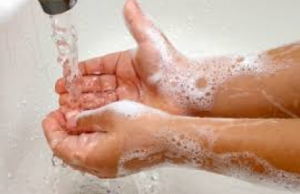This printable PDF from the CDC
outlines the steps involved for a diaper change that minimizes the chance of spreading pathogens such as pinworms or hand foot and mouth. These are crucial to the health and safety of the provider and all of the children they care for.
What it doesn’t show is the incredible opportunity for relationship building that is also present at every diaper change. How often are you just a foot or so away from the child’s face for such a focused time? Spending diaper changes talking to the child is one high-impact way to build relationships, and also make the diaper changes themselves easier. What toddler is going to try to roll or wrestle away when one of their favorite people is talking to them, or playing “this little piggy” with their toes?
It doesn’t add a significant amount of time to really pay attention to the child being changed, but the payoff in peaceful diapering and overall relationship can’t be overstated!
The important but routine tasks involved in ensuring children’s needs are met through each day. Care tasks may include feeding, diapering, toileting, washing, dressing/undressing, putting a child to sleep, and more. The time spent with children during these routines can be some of the most valuable for connection if adults take the time to involve the child, talk to the child, and make it enjoyable.
This handout gives procedures for maintaining proper hygiene while diapering and hand-washing. This may be useful when new assistants are hired or for any adult who is helping out.

